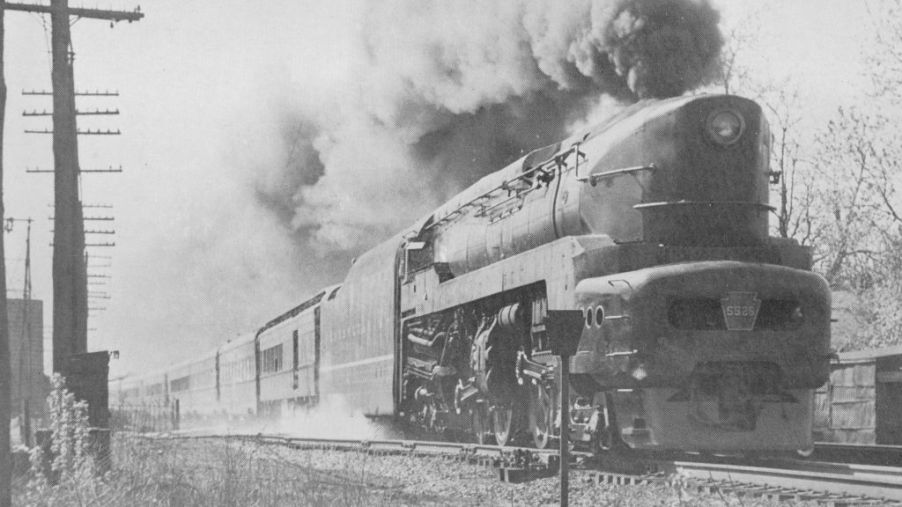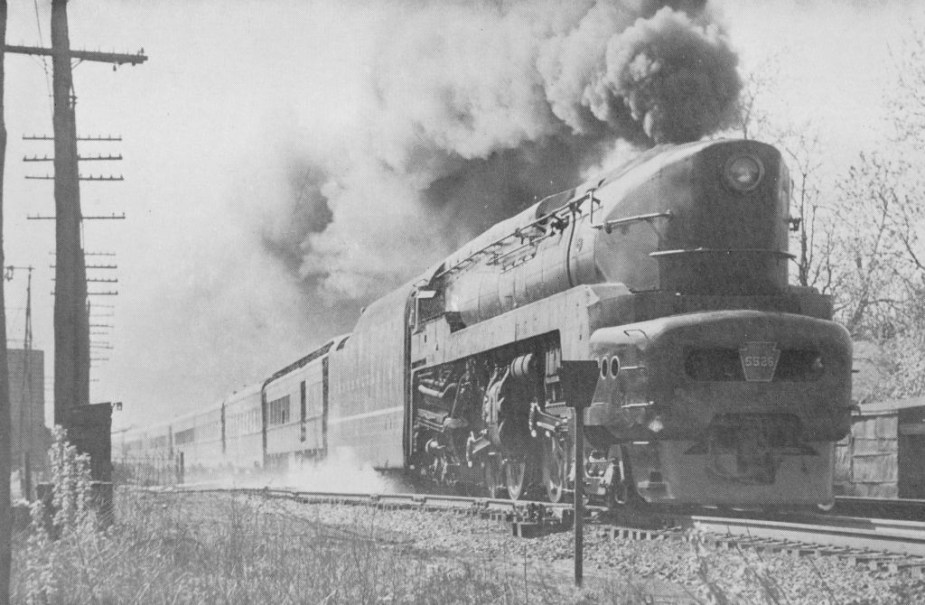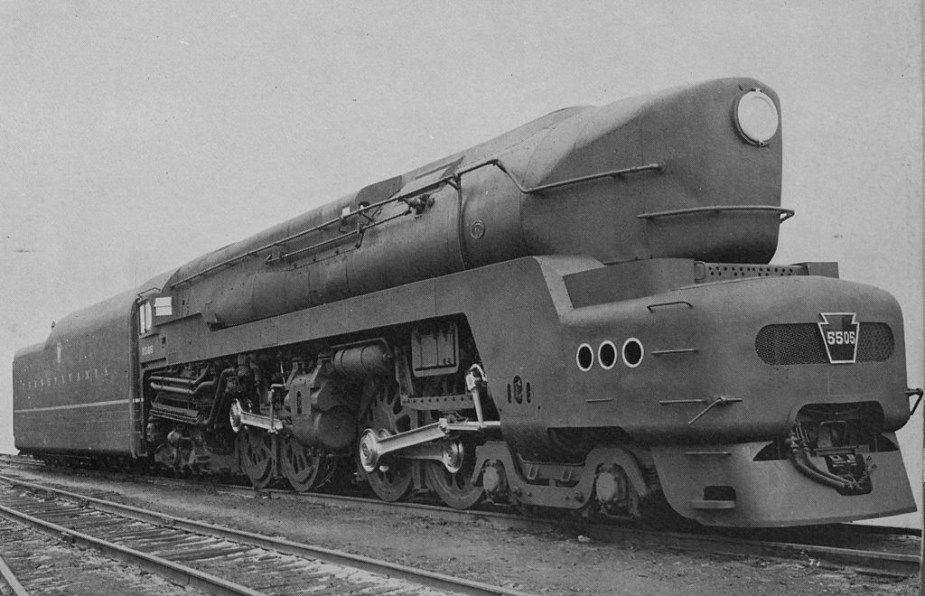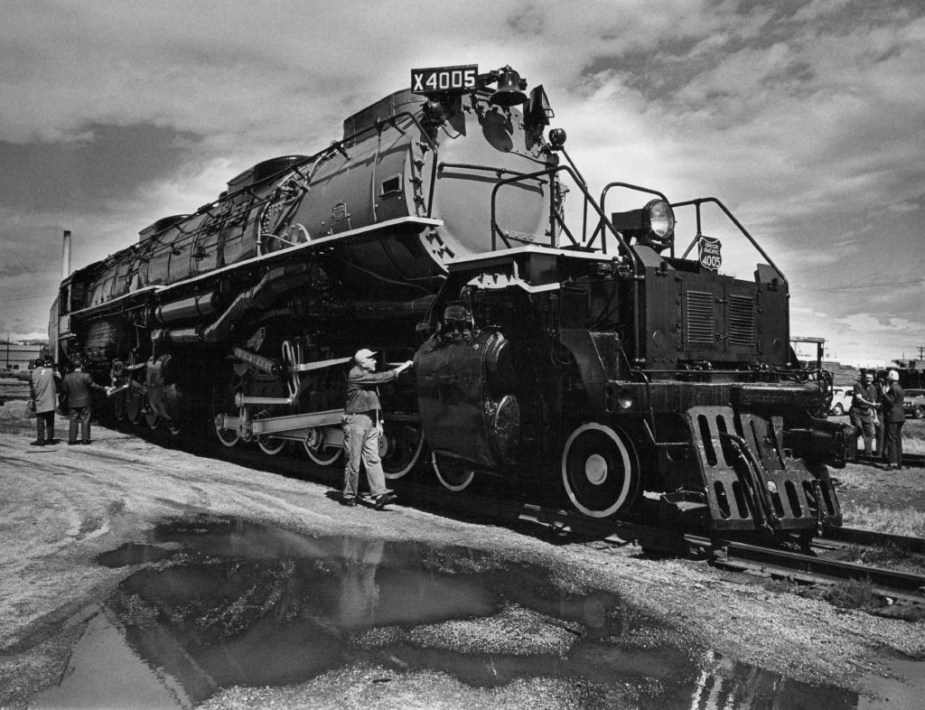
PA Team Is Recreating the Fastest Steam Locomotive Made-From Scratch!
Wait, isn’t this 2022? So why is a team of builders recreating one of the most infamous travel steam locomotives ever created? It never happens like this. There’s no one left who even knows how to do it. But it is happening. In fact, they have already created the Pennsylvania Railroad’s T1 iconic nose and boiler. Other components are coming together right now. But how, and why?
Did any T1 locomotives survive?

First, the streamlined T1 came out in the early 1940s, from a design by industrial designer Raymond Lowey. The same person who designed the Coke bottle and Studebakers around the same time. Only 52 were ever made. On the day the first one debuted, another Pennsylvania Railroad train, the first diesel locomotive, also debuted. It was the future, not the T1. By the 1950s, T1s slowly disappeared. By the end of the decade, none had survived.
The thing about the T1 was that its streamlining meant it could reach speeds of up to 140 mph, according to anecdotal evidence. However, the world record for the fastest steam locomotive goes to the A4 Mallard, Britain’s shining star, at 126 mph. Because the T1 speeds were anecdotal and never certified in timed runs, the record has been with the U.K. forever.
But maybe not. A group of obsessed yardbirds is pooling their money and resources to create a continuation of the T1. And they’re about halfway there. But there’s a long way to go. And money is always what slows down projects. That’s where The T1 Trust comes in.
How can a locomotive that doesn’t exist be recreated?

The nonprofit has been accepting donations since 2013 and has shown steady progress. Helping the project are original blueprints and a concerted effort to gather the necessary tribal knowledge to pull this off. After all, this isn’t the easiest vehicle to recreate.
But it has happened before. Train enthusiasts have already recreated the LNER Peppercorn Class A1 locomotive, another steam train lost to time. So it can happen, and actually is, if slowly. And besides the thrill of doing the impossible, there’s that speed record that is driving the project.
But looking at it, a 428-ton, 122-foot long locomotive with over six-feet high wheels, is close to impossible to make. And according to The Drive, there are eight needed, as the T1 was a 4-4-4-4 duplex-drive train. So there are four unpowered leading wheels to spread out the weight, then two sets of four wheels that are powered. Finally, there are four unpowered trailing wheels, again, to spread out that over 400-ton load.
How was the locomotive’s power generated?

Power was generated by double-acting steam engines with a 19.75-inch bore and 26-inch stroke. That comes out to a 522.1-liter four-cylinder that withstood 300 psi steam pressure. In terms of power, that comes out to 6,665 hp at 85 mph. The T1 could easily sustain 100 mph runs with ease. But it had certain built-in problems doing that.
History shows that cracked poppet valves were a problem. So the T1 team will substitute them with camshaft-driven rotary valves. This should help to correct its Achilles Heel. Another change is going from coal fire to using fuel oil. The recently restored Union Pacific Big Boy 4014 steam train used this change as well. Other unspecified adjustments will also happen. But none of these should take away from the authenticity of the T1.
Progress continues

So the T1 team forges ahead with no reference parts, and knowledge gleaned from isolated International sources. And don’t forget, they do have the blueprints and technical documentation. It also is retrofitting an existing Santa Fe 4-8-4 2900 tender, which will save the trust millions of dollars and lots of time creating from scratch. It is a miracle it even exists, at 200,000 lbs.
Right now, it’s at 40 percent completion. Currently, the 68-foot frame is being constructed. And all of this from $1.6 million in donations. So the mythical T1 looks like it could be ready to fire up at the end of the decade. We’re not suggesting you contribute, but if you’re inclined, you can contact the trust.



